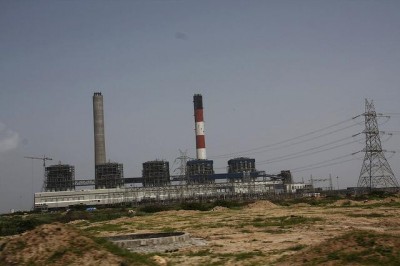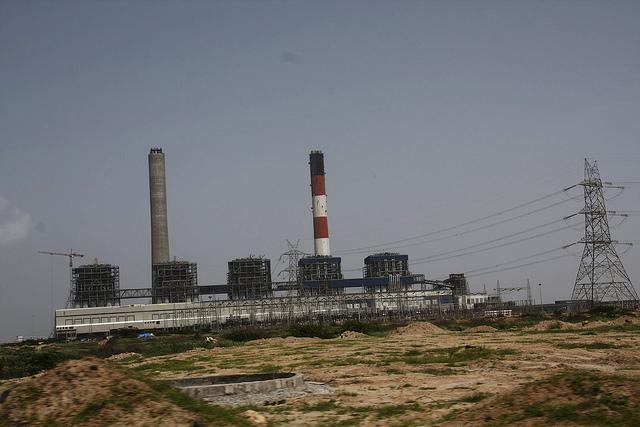
The Tata Mundra coal plant in India (Joe Athialy/Flickr)
In June 2013, President Barack Obama announced that he was “calling for an end to public financing for new coal plants overseas.” Within weeks of this announcement, World Bank President Jim Kim announced the Bank would phase out its support for most forms of coal. However, what World Bank President Kim and President Obama left unsaid was how both presidents would treat current public financing of coal-fired power plants, particularly plants that are violating the policies set by the World Bank.
President Kim may soon have to tackle just this issue. A case in point is the Tata Mundra coal-fired power plant in India. The International Finance Corporation (IFC), the World Bank’s private sector lending arm, in 2008 provided $500 million in financing to back this massive coal-fired power plant in Tunda-Vandh village near Mundra, a town in the Indian state of Gujarat. The complex of five 800-megawatt supercritical boiler plants was supposed to cost $4.14 billion to build and be owned and operated by Coastal Gujarat Power Limited, a special purpose vehicle owned by India’s largest private multinational corporation, the Tata Group.
The IFC isn’t the only powerful public international financial agency backing the Mundra power project: The Asian Development Bank, The Japan Bank for International Cooperation (JBIC), and the Korea Export Insurance Corporation are also involved.
The project now faces a whopping 270% in annual debt, and its CEO has stated the project is financially unviable unless electricity tariffs are drastically raised, effectively passing on the costs of Tata’s poor planning and misleading calculations to the Indian people. This negates one of the primary justifications the IFC presented in financing this project: that it would bring cheap electricity for the energy-deprived and energize the local economy.
Furthermore, the project also faces mounting debt which must be paid back in dollars, not rupees, at a time when the Indian rupee is dropping in value.
This power plant is burning about 13 million tons of coal a year, emitting nearly 40 million tons of CO2. It also generates tons of toxic fly ash and other toxic byproducts and radioactive elements due to coal combustion. This Tata Mundra plant, plus two others nearby, burn a total of 30 million tons of coal per year and emit about 88 million tons of CO2 annually—more than the combined total annual emissions of Bangladesh (a nation of 150 million people), Nepal, Sri Lanka, Bhutan and the Maldives.
The Mundra plant is situated on the Gulf of Kutch, with ready access to ports and coal that is being imported from Indonesia and Australia. What once was a region with abundant fish, farms, and pastoralists is now a region contaminated by pollution, with tens of thousands of fisher-folk and pastoralists losing their livelihoods.
In June 2011, community groups asked the IFC’s Compliance Advisor Ombudsman (CAO) to investigate environmental and social violations of the contract Tata signed with the IFC. The CAO full audit report and the IFC management’s response are expected this week. A report produced by an independent fact-finding team found numerous violations of IFC policies.
So now the question becomes: Does the IFC remedy the Tata Mundra violations, or simply cancel its support for the project, given President Kim’s and President Obama’s stated opposition to public financing of coal-fired power overseas? To do otherwise is to allow Tata to not only violate IFC policies, but to mislead its investors and then pass on the costs of its boondoggle to the very people whose poverty the company is theoretically alleviating.
What the Tata Mundra case should make clear to President Kim and others around the world is: Coal is a bad investment—for the poorest, for those consuming the power, for the Bank, and more broadly, for all of us. As a recent study of a dozen of 2012’s wildest weather events found, man-made greenhouse gas emissions from coal burners like Tata’s are increasing the likelihood of about half of the wild weather events we lived through in 2012, including Superstorm Sandy; estimates suggest Sandy alone cost $68 billion.
We can’t afford to keep subsidizing these boondoggles. We can and must use public funds to invest in clean, renewable energy alternatives, with a primary focus on energy for the poorest.
